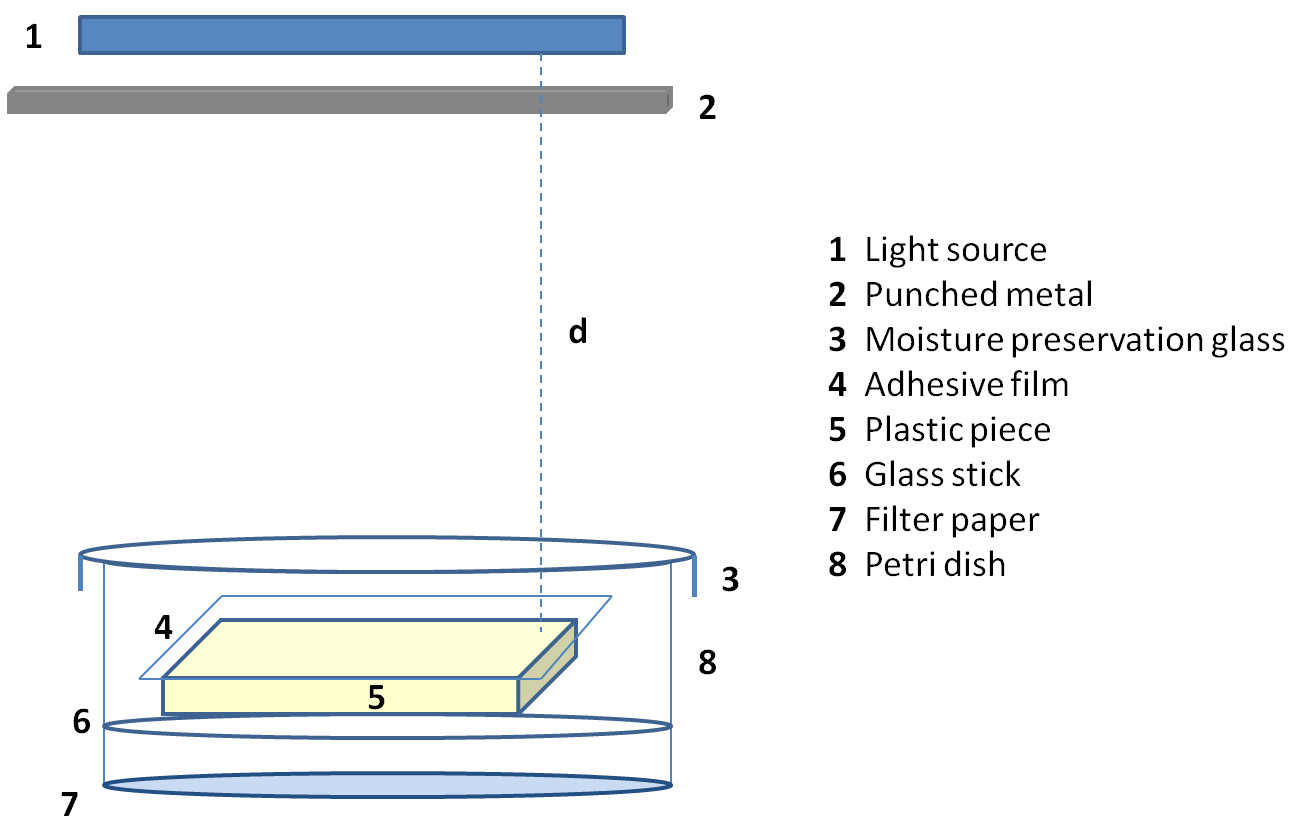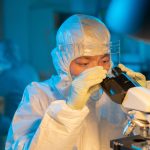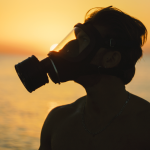The International Organization for Standardization (ISO) protocols to evaluate antimicrobial activity on plastics and ceramics surfaces pre-treated with semiconductors include ISO-27447:2019 and ISO 17094:2014 (Test method for antibacterial activity of semiconducting materials under indoor lighting environment). In the first one UV black light (365 nm TLD18W/BLB Black) is used to illuminate samples during the test and in the second one fluorescent light (MASTER TL – D Super 80 18W – 840 Cool White). Both methods apply to testing the antibacterial activity of photocatalytic ceramics and other materials produced by either the coating or mixing of a photocatalyst. In general, the plastic piece is put down in a Petri dish and the bacterial suspension is added onto the piece. Adhesive film or glass is used to cover the suspension and a glass is placed on top of the Petri dish. The Petri dish containing the plastic piece is exposed to light (Figure). After exposure, the test bacteria are washed out of the plastic and the adhesive film or glass. This washout suspension is measured by the viable bacterial count method. Calculations are expressed in log scale and take into account blanks of the non-treated plastic piece. Triplicates are used: 3 non-treated samples are used for post-inoculation, 3 non-treated and treated samples are kept in dark and 3 non-treated and treated samples are irradiated. Values of n log, at certain irradiation times are reported, where n = 1 corresponds to 10 % of bacteria remains after irradiation of the pre- treated plastic and n = 2, and n = 3 , to 1 % and 0.1 %, respectively.
Bacteria used are Escherichia coli, Staphylococcus aureus or any other bacteria of interest. Virus may also be tested. In the case of ISO-2747, the black light intensity can be controlled to simulate solar light coming into closed spaces nearby or far away from windows. Intensities of 0.25-0.02 mW/cm2 are obtained by changing the distance from the lamp of W power (W/cm2 = W/(4 x d2) or blocking the lamp light with a punched metal sheet.






